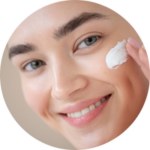The Secret to Stronger Hair: A Complete Care Routine

Having strong, healthy hair is a goal for many, whether you’re looking to improve its texture, reduce breakage, or boost its natural shine. However, achieving this requires more than just using the right shampoo or conditioner. The key to stronger hair lies in a complete, well-rounded care routine that nourishes your strands from root to tip. In this article, we’ll guide you through the essential steps to create the ultimate hair care routine, giving you the tools you need to boost your hair health and keep it looking vibrant and strong.
1. Understanding Your Hair Type
Before diving into a hair care routine, it’s important to understand your hair type. Different hair types—straight, wavy, curly, or coily—have unique needs, and the products and techniques you choose should cater to these specific characteristics.
Straight Hair
Straight hair tends to be less porous, which can make it more resistant to damage. However, it may also be prone to oil buildup and may require frequent washing to maintain freshness.
Wavy Hair
Wavy hair is a bit more textured than straight hair and often requires a balance of moisture and volume. Wavy-haired individuals should focus on nourishing their strands without weighing them down.
Curly Hair
Curly hair tends to be more fragile and can easily become dry, frizzy, or brittle. It requires extra moisture and care to avoid breakage.
Coily Hair
Coily hair is the most fragile hair type and can suffer from extreme dryness and breakage if not properly moisturized. It’s crucial to use hydrating products and follow a gentle routine to keep it strong and manageable.
2. Choose the Right Shampoo and Conditioner
The foundation of any hair care routine starts with the right shampoo and conditioner. Selecting the right products for your hair type is essential for preventing damage and promoting strength.
Shampoo
When choosing a shampoo, avoid formulas that contain harsh sulfates, which can strip your hair of its natural oils. Opt for sulfate-free shampoos that cleanse without over-drying your hair. For dry or damaged hair, look for shampoos that are formulated with nourishing ingredients such as shea butter, coconut oil, or argan oil.
Conditioner
A good conditioner will lock in moisture and prevent your hair from becoming brittle. For damaged or dry hair, conditioners with proteins (like keratin) are ideal, as they help to strengthen the hair shaft. If you have fine hair, choose lightweight conditioners to avoid weighing down your strands.
3. Deep Conditioning: The Power of Hair Masks
Deep conditioning is a crucial step in maintaining healthy, strong hair. While regular conditioner works well for everyday use, deep conditioning treatments offer an intense dose of moisture and nutrients to your hair. Use a deep conditioning mask once a week, or more frequently if your hair is particularly damaged or dry.
Hair masks that contain ingredients like avocado, honey, olive oil, and protein are ideal for nourishing and repairing damaged strands. Apply the mask after shampooing, leave it in for the recommended time, and rinse thoroughly.
4. Regular Scalp Care: The Foundation for Strong Hair
A healthy scalp is the foundation for strong, thriving hair. If your scalp is neglected, your hair may suffer from issues like excessive dryness, flakiness, or clogged follicles, all of which can lead to weak or slow-growing hair.
Scalp Exfoliation
Exfoliating your scalp once a month can help to remove buildup from styling products, oils, and dead skin cells. You can use a gentle scalp scrub or a brush designed for exfoliation. This will stimulate blood circulation, which promotes hair growth and health.
Scalp Massage
Scalp massages not only feel relaxing, but they can also increase circulation to the hair follicles, stimulating hair growth and improving overall hair health. Use your fingertips to gently massage your scalp for a few minutes daily.
5. Avoid Over-Washing
While it may be tempting to wash your hair every day, over-washing can strip your hair of its natural oils, which are essential for keeping it strong and healthy. For most people, washing hair two to three times a week is sufficient. However, the frequency of washing can vary depending on your hair type and lifestyle.
If you have oily hair, you may need to wash more often. If you have dry hair, washing less frequently will help retain moisture.
6. Protect Your Hair During Styling
The way you style your hair can greatly affect its strength and health. Heat styling tools, tight hairstyles, and excessive brushing can lead to breakage and damage. Protecting your hair during styling is key to maintaining its strength.
Heat Protection
If you regularly use heat styling tools such as flat irons, curling irons, or blow dryers, always use a heat protectant spray or serum. Heat protectants form a barrier that helps to shield your hair from the damage caused by high temperatures.
Minimize Heat Usage
As much as possible, try to limit the use of heat styling tools. Let your hair air dry when you can, and opt for heatless styling methods, such as braiding your hair overnight to achieve natural waves or curls.
Gentle Brushing
Avoid brushing your hair aggressively, as this can cause breakage. Use a wide-tooth comb or a detangling brush to gently work through knots and tangles. Start at the ends and work your way up to minimize stress on the hair shaft.
7. Trim Your Hair Regularly
Regular trims are essential for maintaining healthy hair. Even if you’re trying to grow your hair out, trimming the ends every six to eight weeks will help prevent split ends and breakage, ensuring that your hair stays strong as it grows.
When trimming, ask your stylist to only trim the split ends and avoid taking off too much length.
8. Healthy Diet: Fueling Your Hair from the Inside
What you put into your body plays a significant role in the health of your hair. A well-balanced diet rich in vitamins and minerals is essential for promoting hair strength.
Key Nutrients for Stronger Hair
-
Biotin: This B-vitamin is known for promoting hair health and preventing hair loss. Foods like eggs, nuts, and avocados are excellent sources of biotin.
-
Vitamin E: This antioxidant helps improve circulation to the scalp, ensuring that hair follicles receive the nutrients they need. Include foods like spinach, almonds, and sunflower seeds in your diet.
-
Vitamin C: Vitamin C helps your body absorb iron, a mineral essential for hair growth. Foods like oranges, strawberries, and bell peppers are rich in vitamin C.
-
Zinc: Zinc deficiency is linked to hair loss, so make sure to include zinc-rich foods like pumpkin seeds, chickpeas, and oysters in your diet.
9. Stay Hydrated
Drinking plenty of water is vital for maintaining the overall health of your hair. Dehydration can make your hair dry, brittle, and more prone to breakage. Aim to drink at least eight glasses of water per day to keep your hair and skin hydrated.
10. Avoid Stress
Chronic stress can lead to hair loss and weaken your hair. Stress causes a hormone imbalance that affects the hair growth cycle, often leading to excessive shedding. Practicing stress management techniques, such as yoga, meditation, or deep breathing, can help prevent hair loss and improve overall well-being.
11. Consider Supplements
While a balanced diet is the best way to nourish your hair, some people may benefit from taking hair supplements. Look for supplements that contain a blend of vitamins and minerals that support hair health, such as biotin, zinc, vitamin C, and collagen.
Consult with a healthcare provider before starting any supplement regimen, as some may interact with medications or cause side effects.
12. Sleep and Hair Health
While we often associate sleep with rest and recovery, it also plays an essential role in the health of your hair. During sleep, your body goes into repair mode, and this includes the cells in your hair follicles. Consistently getting a good night’s sleep promotes hair growth and reduces the risk of hair thinning or shedding.
Sleep Tips for Healthier Hair:
-
Silk Pillowcases: Traditional cotton pillowcases can cause friction, leading to breakage and split ends. Silk pillowcases, however, are gentler on the hair and reduce friction, allowing your hair to retain moisture and remain smooth.
-
Avoid Tight Hairstyles at Night: Sleeping with tight ponytails, buns, or braids can damage hair and weaken the roots. Instead, opt for loose hairstyles like a loose braid or simply leaving your hair down to prevent stress on the strands.
13. Chemical Treatments and Hair Damage
Chemical treatments, such as coloring, perming, or relaxing, can significantly impact hair strength. While these treatments offer great styling options, they can leave your hair weak and vulnerable if not done properly.
Minimizing Damage from Chemical Treatments:
-
Choose Professional Services: If you’re getting a chemical treatment, always go to a professional stylist who can assess your hair’s health and choose the best products for your hair type.
-
Use Protein Treatments: After any chemical treatment, incorporating protein-based treatments into your hair care routine is crucial. These products help to replenish the protein lost during the process and strengthen your hair from within.
-
Give Your Hair Time to Recover: After undergoing a chemical treatment, it’s important to let your hair recover. Avoid frequent coloring or chemical treatments, and instead focus on hydrating and protecting your hair to prevent excessive damage.
Conclusion
Stronger, healthier hair isn’t an overnight achievement, but with the right care and routine, it’s entirely possible. By understanding your hair type, choosing the right products, nourishing your scalp, and using the correct styling techniques, you can significantly improve your hair’s strength and appearance. Don’t forget to support your hair from the inside out with a balanced diet, proper hydration, and good sleep habits. Patience is key, but with consistent care, you’ll see noticeable improvements in the health and strength of your hair.
As you embark on your journey to stronger hair, remember that hair care is a holistic process. It requires a combination of the right products, techniques, and lifestyle habits. Whether you have curly, wavy, or straight hair, these fundamental tips and tricks will help you achieve the strong, vibrant locks you’ve always dreamed of. Keep your routine consistent, and over time, you’ll enjoy healthier, shinier, and more resilient hair.






